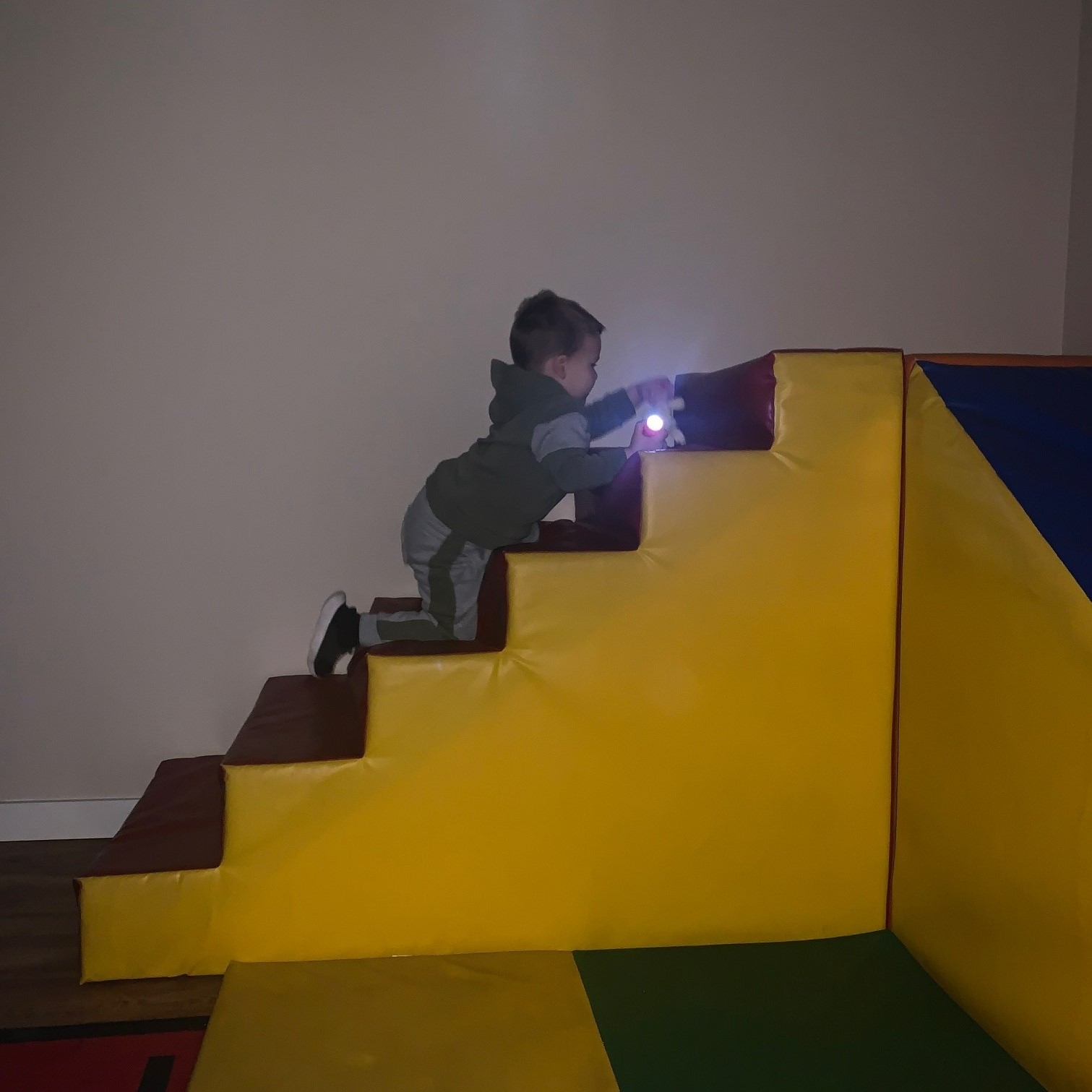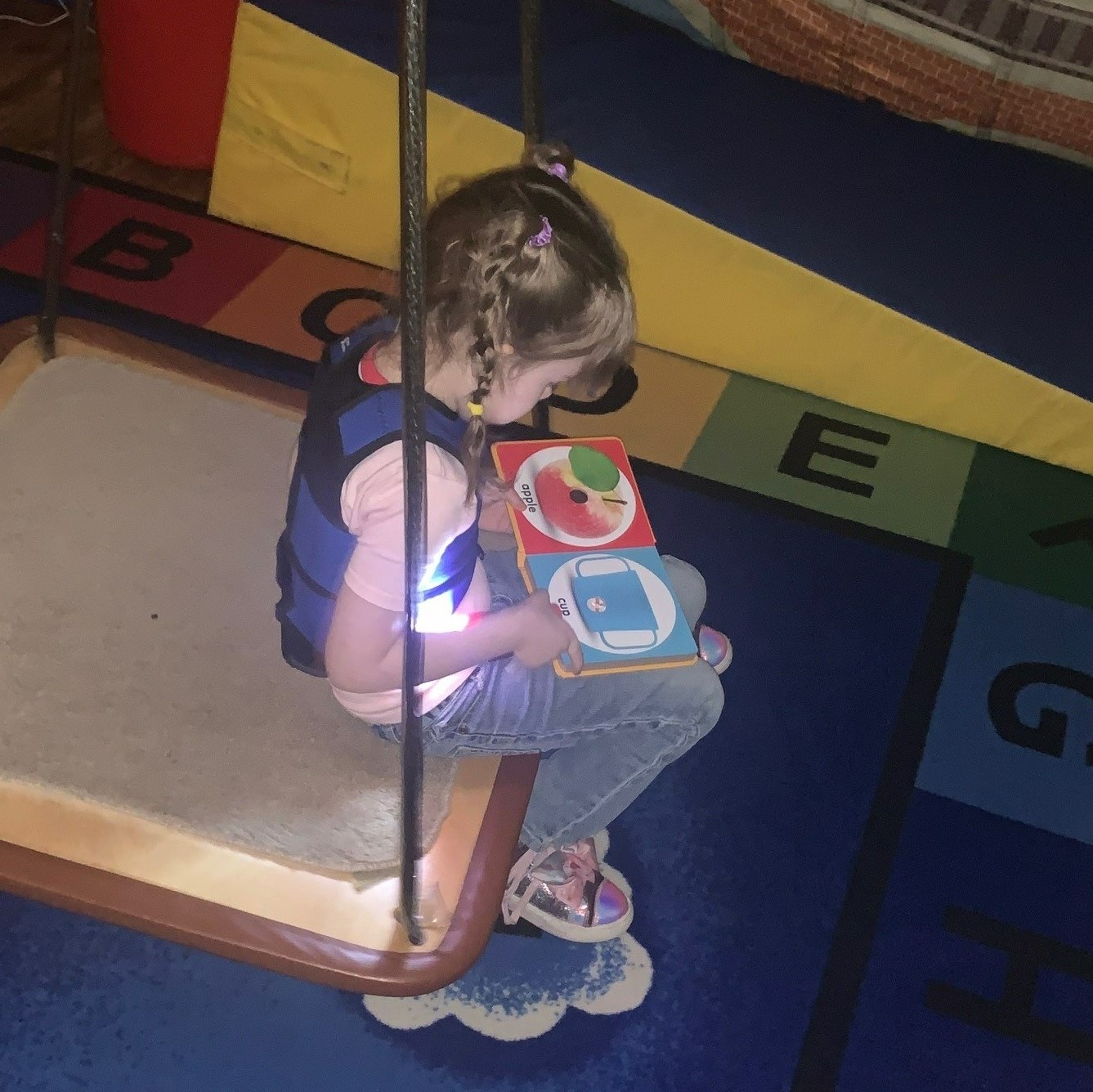Written By: Belinda Worley, MS, CCC-SLP
 How many of you love fun, creative, cheap therapy tools? Of course, we all do! I find that in my speech pathology practice, Bootheel Pediatric Therapy LLC in Dexter, Missouri, I am always on the hunt for the latest and greatest therapy tool or toy. Over my 22 years in practice, I have learned that many of our common household objects work great when providing speech therapy services to children and the best part is they do not break the budget. One of my favorite household items to use during therapy is a flashlight. Think back to when you were a child. If you were anything like me, you loved a flashlight for exploring outside, tent games, spying on your siblings, or maybe reading when you were supposed to be asleep. With April being Autism Awareness Month, I want to share how I use a flashlight with this ever-growing population. The benefits are endless and can be adapted based on the child you serve. I have found that a flashlight can help some of my children attend to therapy better, self-regulate, helps with pointing, and at times helps some of my children on the autism spectrum even lower their voice volume. Here are a few activities that you can try in your sessions.
How many of you love fun, creative, cheap therapy tools? Of course, we all do! I find that in my speech pathology practice, Bootheel Pediatric Therapy LLC in Dexter, Missouri, I am always on the hunt for the latest and greatest therapy tool or toy. Over my 22 years in practice, I have learned that many of our common household objects work great when providing speech therapy services to children and the best part is they do not break the budget. One of my favorite household items to use during therapy is a flashlight. Think back to when you were a child. If you were anything like me, you loved a flashlight for exploring outside, tent games, spying on your siblings, or maybe reading when you were supposed to be asleep. With April being Autism Awareness Month, I want to share how I use a flashlight with this ever-growing population. The benefits are endless and can be adapted based on the child you serve. I have found that a flashlight can help some of my children attend to therapy better, self-regulate, helps with pointing, and at times helps some of my children on the autism spectrum even lower their voice volume. Here are a few activities that you can try in your sessions.
 1. Use a flashlight to point to common objects. I love to give the child a flashlight, and of course, I have one too. I have a basket filled with common objects that we target learning to identify. We turn off the lights and I shine the light on each object. The child can name the common object of interest. Sometimes I hold up two common objects and they can point to the one that I name using the flashlight.
1. Use a flashlight to point to common objects. I love to give the child a flashlight, and of course, I have one too. I have a basket filled with common objects that we target learning to identify. We turn off the lights and I shine the light on each object. The child can name the common object of interest. Sometimes I hold up two common objects and they can point to the one that I name using the flashlight.
2. Another idea is before they arrive to therapy, I hide common objects all around the room. We then turn off the lights and crawl around the room finding the objects. Once we crawl and shine our flashlight on the common object, we name it. I can even encourage the child to tell me what they would like me to find. We target turn-taking or we can complete the task together. We can even work on short phrases, “I see a ball.” I might even encourage the child to find “functions”. (Example: “Find something you can wear on your feet.”)
 3. While crawling around the room, I like to use prepositions – in, through, over, under, behind, etc. I crawl under the table to find common objects or maybe over the chair. They think it is crazy when Mrs. Belinda is crawling around on the floor with them. Talk about joint attention! They never know what I will do next!
3. While crawling around the room, I like to use prepositions – in, through, over, under, behind, etc. I crawl under the table to find common objects or maybe over the chair. They think it is crazy when Mrs. Belinda is crawling around on the floor with them. Talk about joint attention! They never know what I will do next!
4. I like to tape the flashcards that we are targeting to the wall with my painter’s tape. This week I had an area of action cards taped to the wall. The children and I turn off the lights, turn on our flashlights, and let the fun begin. They can find the card I have named by pointing with their flashlight or they can name what they have found. Just like when we were crawling around on the floor, this activity can target both receptive and expressive goals.
5. I use a flashlight when using books in therapy. The child can name what he/she sees as we work our way through turning the pages. I can also give a directive to “find the child that is swinging” or maybe “find something red”. The possibilities are endless when using flashlights and literacy.
6. If you have a child you are targeting articulation with, you can use the flashcard game as a way to target sounds, words, phrases, but in a fun way as opposed to sitting at a table with a boring flashcard drill. Tape the articulation cards under the table. Now it is time to crawl under the table and lay down. Simply take your flashlight pointing at each word as you practice the articulation drill from under the table. Get ready for lots of giggles. The kids love it!
 Children love movement and I promise your children with a diagnosis of autism need movement and sensory integration activities to be successful in the therapy session, classroom, and daily living. I hope you will consider this activity when working with your children. For more creative ideas please join me online or live in my presentation, Autism: Across the Spectrum where we discuss many other inexpressive and creative techniques. I am also the author of An Autism Journey of Hope available on Amazon, Barnes and Noble, and Books A Million. Thank you for your support and desire to spread autism awareness everywhere you go.
Children love movement and I promise your children with a diagnosis of autism need movement and sensory integration activities to be successful in the therapy session, classroom, and daily living. I hope you will consider this activity when working with your children. For more creative ideas please join me online or live in my presentation, Autism: Across the Spectrum where we discuss many other inexpressive and creative techniques. I am also the author of An Autism Journey of Hope available on Amazon, Barnes and Noble, and Books A Million. Thank you for your support and desire to spread autism awareness everywhere you go.
Remember you know your clients best, so adapt based on their ability. Each child will be different in the directives you can provide and their communicative abilities. The most important thing to do is to simply have fun. If I can ever help you contact me at bptkids@yahoo.com. Happy Autism Awareness Month Friends!
Explore online continuing education courses from Belinda below:
Identification of Autism Spectrum Disorder in Early Intervention

Drake has grown up so much with your help. We appreciate what you have accomplished with him and can’t wait to see what else you have to teach him. Thank you for loving him and working with him.